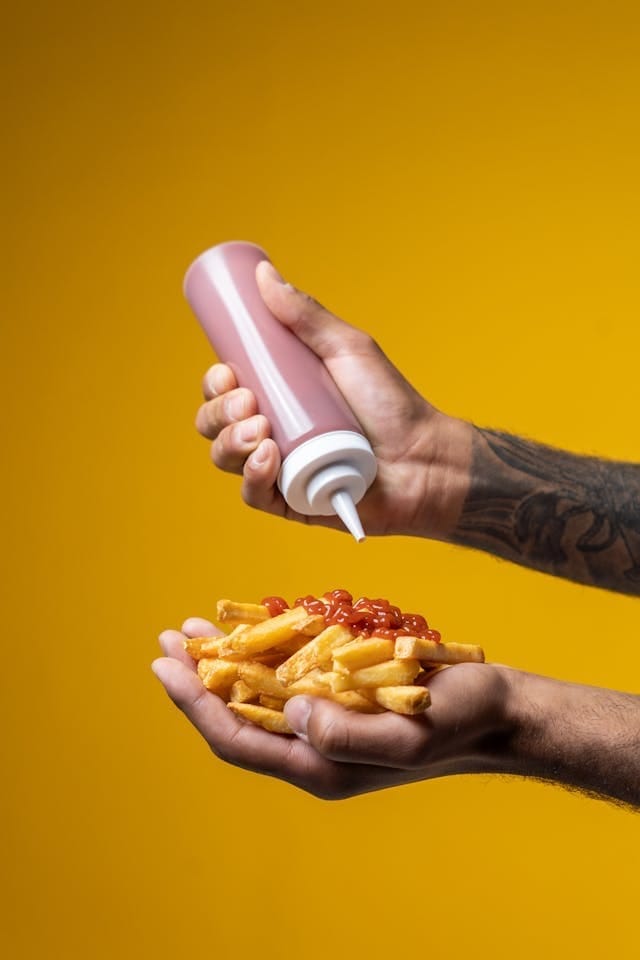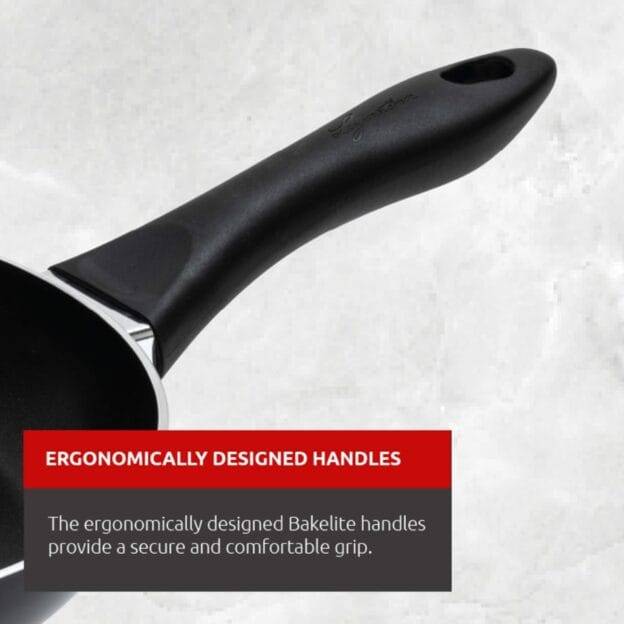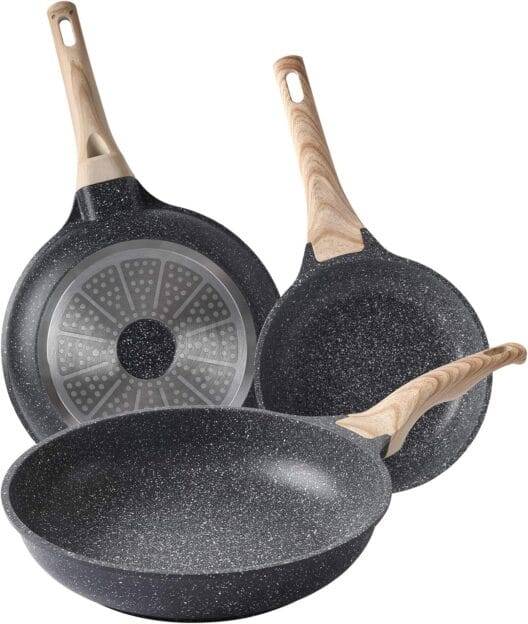What’s The Best Frying Pan For Deep Frying?

What’s your go-to meal when you want something crispy and delicious? If it’s deep-fried food, you’re in for a treat! The secret to achieving that perfect crunch often lies in the frying pan you choose. But with so many options available, how do you find the best frying pan for deep frying? Let’s take a closer look.
Understanding Deep Frying
Deep frying is a cooking method where food is submerged in hot oil. This technique cooks food quickly, resulting in a crispy exterior while keeping the inside moist and tender. The right frying pan is crucial for even heat distribution and safety, as hot oil can be hazardous if not handled properly.
Benefits of Deep Frying
There are a few reasons why deep frying has become such a beloved cooking method. Here are some highlights:
- Quick Cooking: Deep frying cooks food rapidly due to the high temperature of the oil.
- Flavor: It enhances the flavor and texture of food, making it deliciously crunchy.
- Versatility: You can deep fry various foods, from vegetables and meats to desserts.
Safety While Deep Frying
Safety is paramount when deep frying. It’s essential to choose a frying pan that has deep sides to minimize oil splatter. Moreover, always use a thermometer to monitor the oil temperature, and have a lid handy in case of flare-ups.
Choosing the Right Frying Pan for Deep Frying
When selecting a frying pan for deep frying, several factors come into play:
Material
The material of the frying pan affects heat retention and distribution. Here are common materials used:
| Material | Advantages | Disadvantages |
|---|---|---|
| Cast Iron | Excellent heat retention; durable; non-stick options available | Heavy; requires seasoning |
| Stainless Steel | Non-reactive; durable; easy to clean | Poor heat retention without aluminum core |
| Non-stick | Easy to clean; less oil needed | Can degrade over time; not ideal for high heat |
| Copper | Excellent heat conductivity; responsive | Expensive; needs maintenance |
Size and Depth
The size of the frying pan matters for deep frying. A pan that’s too small can lead to oil overflow and unsafe cooking. Here’s a breakdown of sizes:
| Size | Best for |
|---|---|
| 8 inches | Small batches, individual servings |
| 10 inches | Family meals, versatile uses |
| 12 inches | Larger batches, great for entertaining |
| 14 inches and larger | Professional use, large gatherings |
Aim for a frying pan that’s at least 4 inches deep to ensure enough oil for proper frying.
Handle and Stability
A sturdy handle is essential for safety, especially when dealing with hot oil. Look for features like:
- Heat-Resistant: This helps prevent burns while handling the pan.
- Riveted: Handles that are riveted to the pan are generally more stable and durable.
A stable frying pan is important for maintaining control when turning or removing hot food.
The Best Frying Pans for Deep Frying
After considering all these factors, let’s look at some top options on the market for deep frying.
1. Cast Iron Skillet
Cast iron skillets are a favorite among many chefs for their heat retention and even cooking. They are perfect for deep frying and can go from stovetop to oven. Getting a seasoned cast iron skillet can also provide a natural non-stick surface over time.
Pros:
- Exceptional heat retention
- Durable and can last a lifetime
- Versatile for various cooking methods
Cons:
- Heavy
- Requires occasional seasoning
2. Stainless Steel Frying Pan
A high-quality stainless steel frying pan with an aluminum or copper core offers great heat conductivity. It’s particularly useful for those who prefer a modern aesthetic in the kitchen.
Pros:
- Durable and non-reactive
- Dishwasher safe
- Good for searing and browning
Cons:
- Can be hard to clean if you don’t use enough oil
- Heat distribution can vary unless using multi-clad construction
3. Non-Stick Deep Fryer
If you want a frying pan that’s easy to clean, a non-stick deep fryer may be the right choice. Just remember that they may not handle high heat as well as other materials.
Pros:
- Minimal oil needed
- Easy to clean
- Lightweight
Cons:
- Poor performance at high heat
- Can wear out over time
4. Electric Deep Fryer
For a specialized option, consider investing in an electric deep fryer. These appliances come with temperature controls and allow for deep frying without the hassles of managing hot oil on the stovetop.
Pros:
- Easier to monitor temperature
- Generally safer with less risk of splatter
- Can fry large batches
Cons:
- Takes up more space
- Can be more expensive upfront
Tips for Successful Deep Frying
Once you have the right frying pan, it’s time to master the art of deep frying. Here are some handy tips:
Prepping Your Food
Before you start frying, ensure your ingredients are correctly prepared. This typically includes:
- Drying: Moisture can lead to splattering, so pat your food dry.
- Breading: If you’re breading food, ensure it’s done before heating the oil.
Monitoring Oil Temperature
Temperature control is crucial for achieving that perfect fry. Use a thermometer to keep the oil at about 350°F (175°C) for optimal results. If your oil gets too hot, it can break down and produce unwanted flavors.
Don’t Overcrowd the Pan
When deep frying, give each piece space in the pan. Overcrowding can drop the oil temperature and lead to soggy food. Instead, fry in small batches if necessary.
Using the Right Oil
The choice of oil significantly affects the outcome. High smoke point oils are best for deep frying. Here are a few options:
| Oil Type | Smoke Point (°F) | Flavor Profile |
|---|---|---|
| Canola Oil | 400 | Neutral |
| Peanut Oil | 450 | Slightly nutty |
| Sunflower Oil | 440 | Light and neutral |
| Vegetable Oil | 400 | Mild |

Common Mistakes to Avoid
Learning from others’ mistakes can improve your frying technique. Here are a few to be cautious of:
Using the Wrong Pan
Ensure your frying pan is deep enough to accommodate oil and the food being fried. A shallow pan can lead to accidents.
Not Patting Food Dry
Excess moisture can lead to splattering and uneven cooking. Always dry your food thoroughly before placing it in the hot oil.
Ignoring Temperature
Failure to monitor the oil temperature can result in greasy, poorly cooked food. Keep that thermometer handy!
Not Having a Backup Plan
Accidents happen. Always have a lid nearby to cover your pan in case of flare-ups, and ensure you have a safe place to cool the food after frying.
Conclusion
Finding the best frying pan for deep frying is not just about choosing a popular brand or the most expensive option. Understanding the materials, size, and features suited to your needs will lead you to the top frying pan for achieving that golden, crispy perfection. Whether you go for a heavy-duty cast iron skillet, a sleek stainless steel pan, or even an electric fryer, the right choice can elevate your fried dishes to a whole new level.
With the tips above, you can build your deep-frying confidence and turn out delightful dishes that will have everyone coming back for seconds. Happy frying!

